Impressions and impacts from third edition of UCI Gravel World Championships
WorldTour prominence, critiques transformed to commendations, pressure adjustments on the go and more
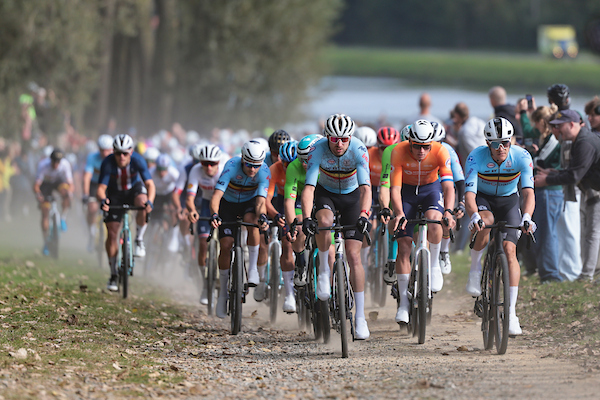
The third edition of the UCI Gravel World Championships saw familiar faces on the podium but not those seen during the gravel racing season.
The elite winners, Marianne Vos and Mathieu van der Poel, both have an extraordinarily long list of world titles from a combination of road, track and cyclocross. They have now added gravel to their stellar palmares, as WorldTour road racers dominated the results in Belgium and saw the Netherlands win both elite titles.
Vos and van der Poel came out on top at the races on October 5 and 6 among strong fields of elite riders from across the cycling disciplines, who took on a diverse but laegley flat course from Halle to Leuven to the south of the Belgian capital Brussels.
The combination of racing disciplines and age groups delivered a whole new level of championship, moving up from its fledgling editions to one where numbers, organisation, profile and prestige were world class.
Cyclingnews takes a closer look at the themes from the weekend that continue to reverberate now that the world champions have been decided.
Test of the best
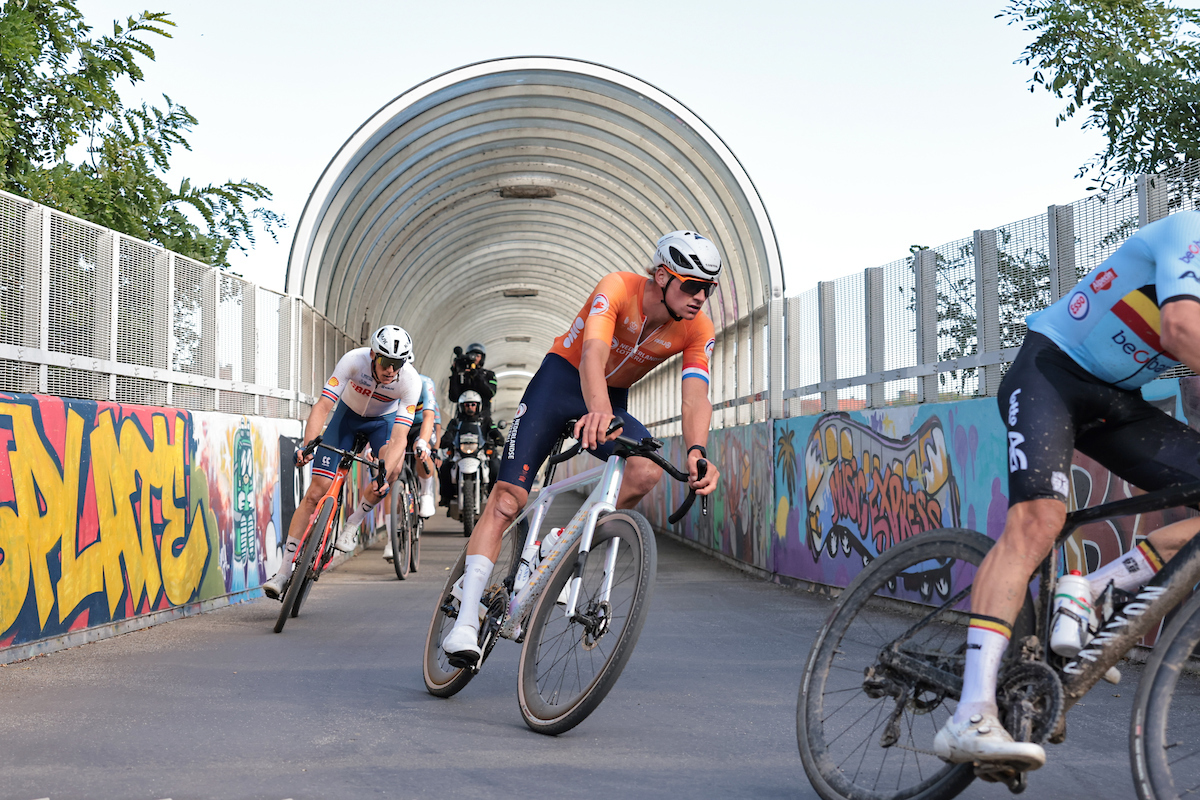
A World Championships, no matter the field of play or race route, should allow the cream of the crop to match pedal strokes and compete for the rainbow jersey and medals.
The event felt like a major one-day Classics, with many of the best WorldTour road riders attracted to the new discipline or different reasons. Some of the sport's best riders from the cyclocross, mountain biking, and gravel, raced hard in the Forests of Brabant.
Get The Leadout Newsletter
The latest race content, interviews, features, reviews and expert buying guides, direct to your inbox!
You don't see that at mountain bike or track championships. So why not let the world's best riders in our sport race gravel? Why not avoid a date clash with other races or hold the World Championships after Il Lombardia and the WorldTour road season, so that Tadej Pogačar, Demi Vollering and others can race too?
The Gravel World Championships not only delivered proven winners, but delivered high-speed entertainment for spectators watching in person and via a live broadcast.
Importantly, it also probably helped attract more people to try gravel. (JT)
Gridlock
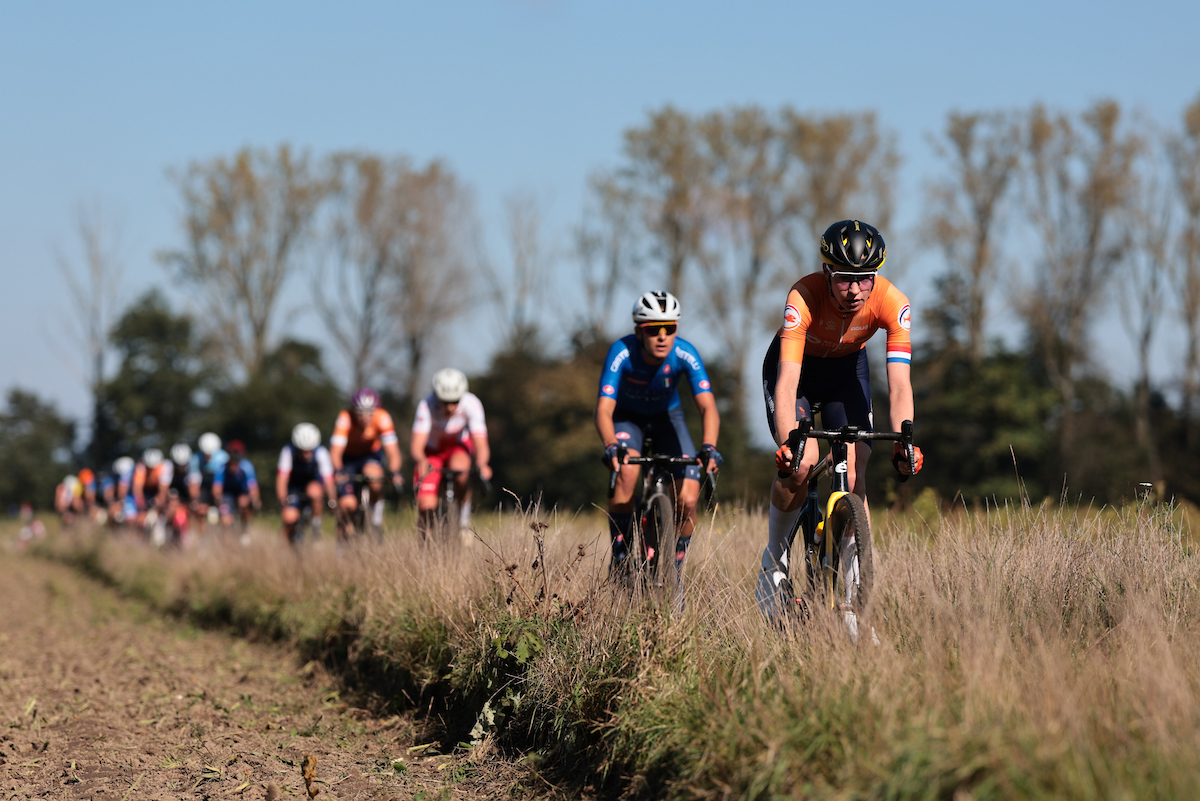
Depending on the course, just like in mountain biking and cyclocross, where you are placed at the start grid of the race can be crucial to where you end it.
The race footage clearly showed the gridlock that occurred as the race headed out of Halle, past the channels and into a tight hairpin bend, with so many riders on the inside caught up with nowhere to go and then the group stretched out single file as far as the eye can see.
In mountain bike and cyclocross riders must earn their grid position by delivering points in the discipline they are racing in. However, the UCI has gone with a different approach for a gravel, as it looks to attract riders from across the sport.
They gravel ranking includes the points granted from the UCI Gravel World series races and there are also UCI Gravel World Championships points from the year prior.
But riders get 50 per cent of their UCI points from rankings in other disciplines - road, mountain bike cross-country (XCO), mountain bike marathon (XCM) and cyclocross.
On the face of it, this sounds like a division that leans toward the specialists in the discipline though keeps the door open to others, but the reality still doesn’t seem to match up, given the predominance of riders from other disciplines at the front of the grid.
Races that have been long established as the biggest draws in the discipline like Unbound Gravel count for nothing, as they aren’t a part of a UCI series, leaving US-focussed gravel riders on the back foot from the beginning.
There weren't many UCI gravel series regulars seen on the front row of the grid, with Tiffany Cromwell (Australia), and men's Gravel World Series top points scorer Petr Vakoc (Czech Republic) among those standing out among the road, mountain bike and cyclocross riders.
6,000 UCI points are on offer for gravel, based on 25 UCI Gravel World Series rounds and 1000 points for the World Championships winner but Lotte Kopecky has a UCI road points total of more than 6,000 points and all of the top 10 elite women's road riders are currently at least sitting at over 2,000 UCI road points.
In the elite men all the top 29 have over 2,000 points, so even getting close to half is a big ask – the Gravel World Series winners gathered little more than 1,000 points from the top spots this year.
The points and start grid is one of those areas that requires a little fine-tuning, though the evolution and growth of the UCI Gravel series could also perhaps do a little tuning of its own. (SG)
Unique course
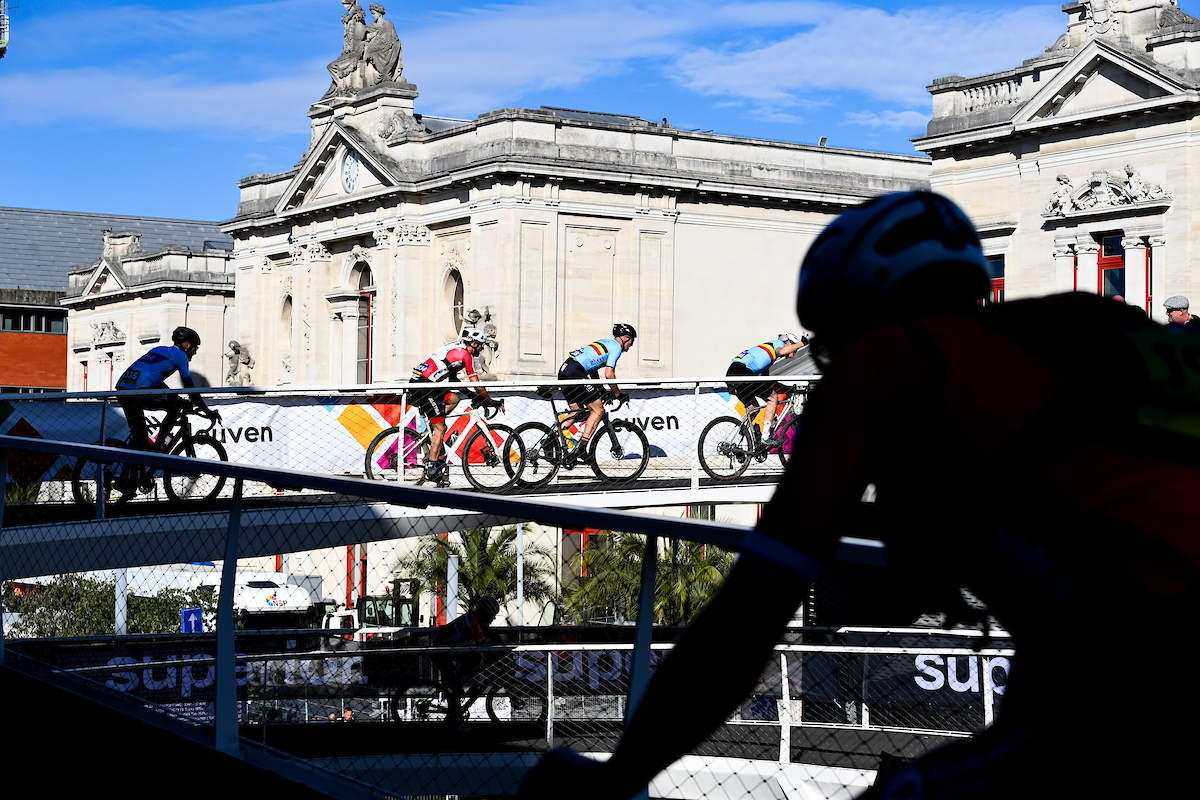
The dust may not yet be settled on a true definition of 'gravel', but Belgium gave it a new look for the Worlds.
One all-inclusive interpretation of a gravel course is as hard to discern as two north poles of separate magnets. In the end, this course was still difficult. Athletes, professional and amateur alike, raved about the diversity, dispelling any pre-race critiques.
Organisers Golazo Sports along with the UCI had to use the local ingredients available in Flanders to challenge elite and amateur riders alike. There are no mountain ranges in the area or straight, wide dirt roads. What they have are elements that make the Classics so special.
"Like all the races I did, every country has its own kind of gravel style racing. And this is Belgium, so it's that's our kind of gravel - some corners, a lot of buildings, forests, punchy climbs and not wide roads. It's a good combination. I think it's Belgium," said Greg Van Avermaet about his home course.
The Halle to Leuven courses included gravel, cobblestones, and paved connections, but also unique ingredients of bike paths, forested singletrack and even a pass on a spiralled bike ramp, 'fietsspiraal', that crosses the railway station of Leuven.
The elite fields were even permitted to pass through a new national park, Brabantse Wouden, to the south of Leuven.
British elite racer Joe Laverick, like Van Avermaet, has raced gravel in North America and Europe and said it perfectly.
"The reason this course is challenging is completely different to the reason Unbound is challenging. But that's the beauty of gravel. It's so different and diverse across, different states in the US, but even different countries, different continents."
Bounty in Belgium

Belgium enjoyed unusually mild and dry weather for the first weekend of October, one that a travel bureau only dreams about. The sunny weather matched a forecast for huge turnouts of spectators in and around Flanders for the third edition of the championships.
According to a spokesperson from the Gravel World Championships, Gert Van Goolen of organisers Golazo Sports, the turnout of just over 2,600 registered riders was double the numbers of amateur and elite riders from the year before. And that was just the beginning of his accounting list.
"In Leuven alone, we had 80,000 people. In Halle, where we had to start, 25,000 people. And along the course, 50,000 people. So in total, 155,000 spectators for this third edition of the Gravel Worlds. Are we happy? Yes, we are.
"But the best thing is, we're only happy if all the riders, of course, the elite men and women, all the others as well, are happy.
"Every kind of cycling works well in Flanders, gravel leans a bit to cyclocross. And you know, we have quite a tradition and history in cyclocross. If it's gravel, if it's roads, if it's cyclocross, it doesn't matter. It's part of our tradition."
Belgium or bust
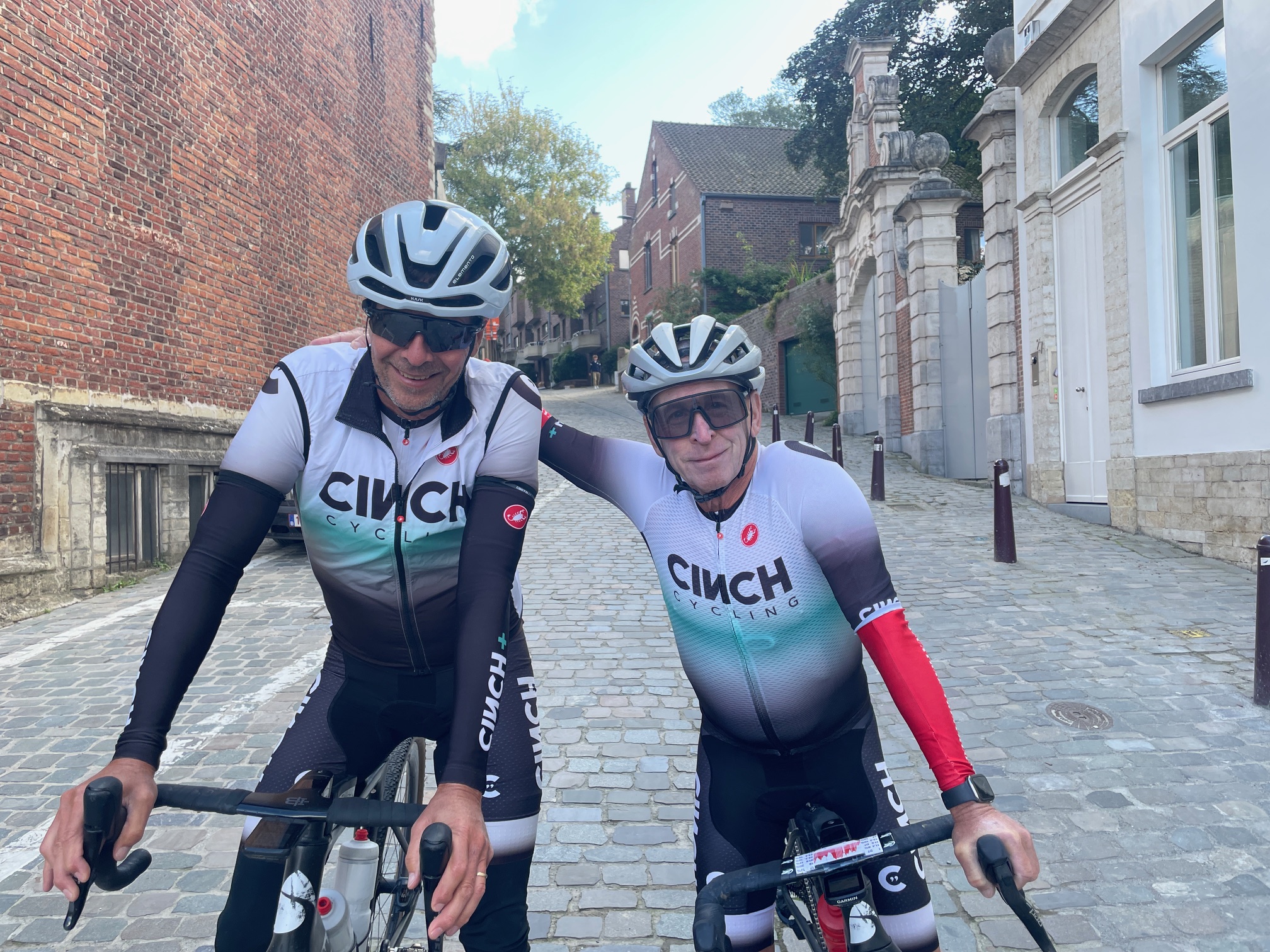
Amateurs from around the world, 2,201 in total, flocked to this year's Gravel World Series to experience some of the terrain used in the spring Classics and test themselves on a global level.
There were 11 different age divisions for men and women, and riders participating from ages 19 to 80. The resounding reason was very simple, "it's Belgium"!
Comments head by Cyclingnews from a wide range of age group riders crossing the finish line in Leuven ranged from "brutal race today", "great day overall" and "the course was so much fun". In fact, one rider who had crashed in the first 10km and completed the route without the ability to shift gears or use rear brakes said despite the bruises, it was the "most fun race I've ever done in almost 40 years of doing this".
One group of eight riders travelled from the US as part of the Cinch Cycling programme so they could take part in a 'bucket list' trip. During recon of the course, one of the riders from Colorado, Jim Everett, crashed and did an unplanned recon of a local hospital to get treatment for cracked ribs.
On the bright side for the international competitors taking on strong contingents from local Belgians, the US came away as the big winner, thanks to the women's age divisions.
Laura Van Gilder (women 60-64), Ruth Clemence (women 65-69), Vanessa Cooney (women 70-74) and Wendy Skean (women 80-84) all came away with gold medals.
A tech win
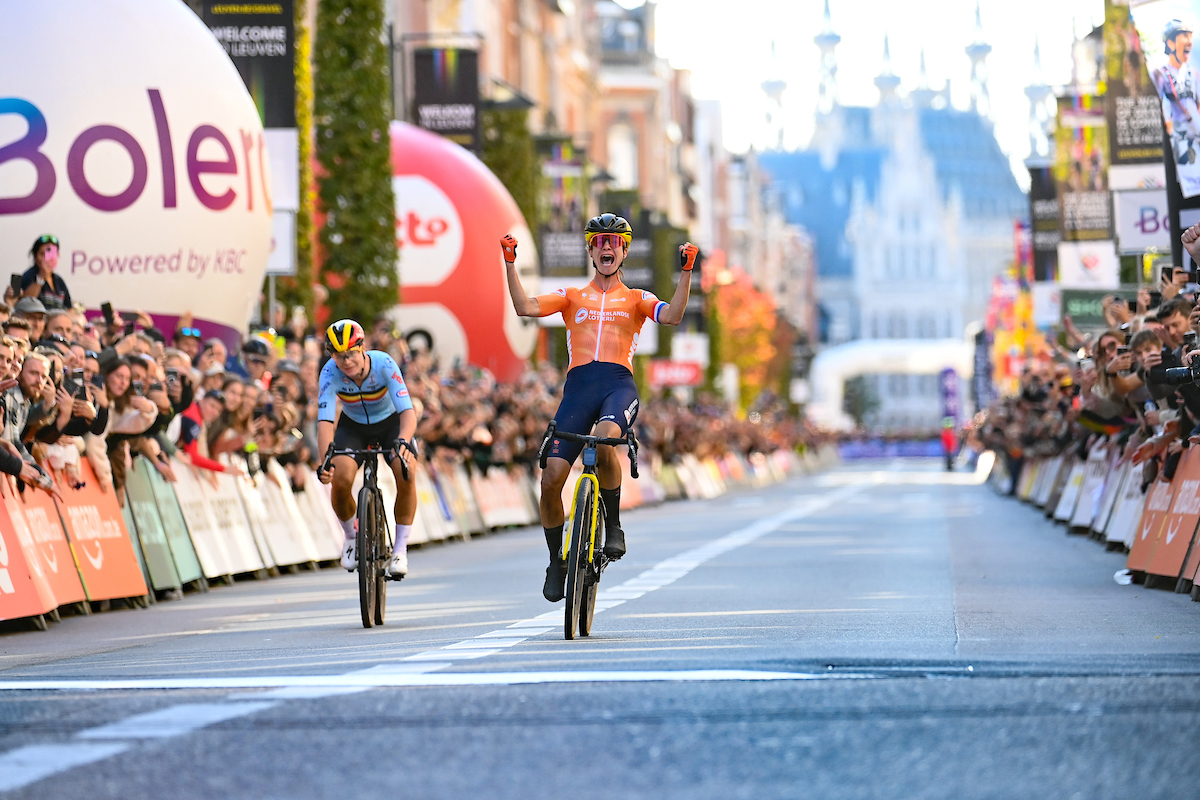
Experimenting with equipment at a World Championships may not be par for the course but given that the discipline is a bit of an experiment in itself, it is perhaps a fitting phenomena.
The multi-discipline world title winner Marianne Vos, raced with the Gravaa KAPS adjustable tyre system, allowing her to adjust her tyre pressure to match the terrain during the race.
It was an option she used telling Cyclingnews: "it helped with higher pressure at the finish but also with lowering the pressure on rougher track."
It is a technology the Visma team have used before, the men's team trying it out at the 2023 edition of Paris-Roubaix, however it seems none saw enough benefit to try it out again this year.
It seems that another chapter in the long history of innovations crossing disciplines is being written and given the level of success at the Gravel World Championships, where it was used by the new wearer of the rainbow jersey, its a technology we could well see popping up again a little more in the future. (SG)
Watch this space
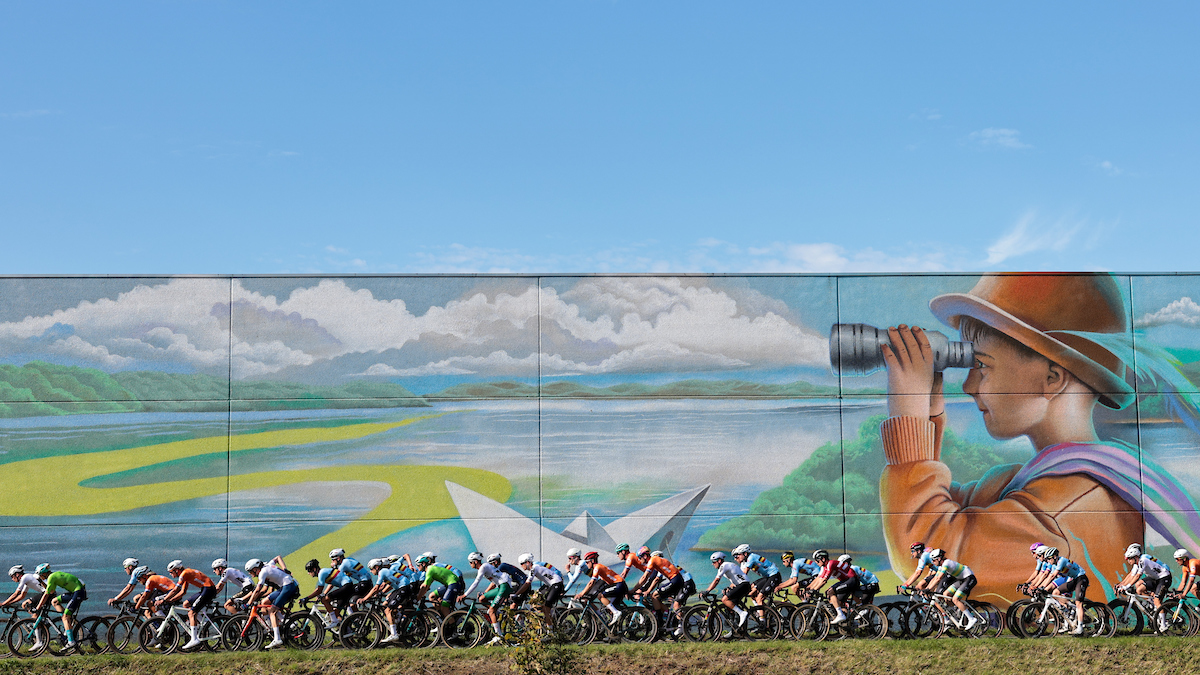
Gravel is undoubtedly a challenging discipline to cover for broadcast, as there are no compact circuits like mountain biking and cyclocross and no wide roads to get vehicles relatively easily around the field like are found on the road.
The reality is rough terrain, at times narrow, hidden tracks and fields of riders that are often split to pieces and spread out early. All this while travelling through forested areas that can obscure the view from above. Plus gravel is a relatively new discipline, so is the process of establishing interested viewers.
Visibility to a wide audience is an important building block in the development of gravel as a sport.
It is no surprise that when a widespread wave of discontent after there was no broadcast of the 2023 elite women’s race.
This year the organisers certainly delivered. While of course, everyone would ideally like live coverage start-to-finish, a live broadcast from 60km to go in the elite women’s race and 85km to go in the elite men’s event, helped television deliver a real sense of how the race unfolded.
The revealing, quality 2024 television coverage is bound to help capture the imagination of a whole new audience and bring even more interest to the rapidly growing discipline, which will hopefully in turn allow the length of the broadcasts to just keep growing. (SG)
Get unlimited access to all of our coverage of the 2024 UCI Gravel World Championships - including breaking news and analysis reported by our journalists on the ground from the elite women's and elite men's events as it happens and more. Find out more.

Jackie has been involved in professional sports for more than 30 years in news reporting, sports marketing and public relations. She founded Peloton Sports in 1998, a sports marketing and public relations agency, which managed projects for Tour de Georgia, Larry H. Miller Tour of Utah and USA Cycling. She also founded Bike Alpharetta Inc, a Georgia non-profit to promote safe cycling. She is proud to have worked in professional baseball for six years - from selling advertising to pulling the tarp for several minor league teams. She has climbed l'Alpe d'Huez three times (not fast). Her favorite road and gravel rides are around horse farms in north Georgia (USA) and around lavender fields in Provence (France), and some mtb rides in Park City, Utah (USA).
- Simone GiulianiAustralia Editor